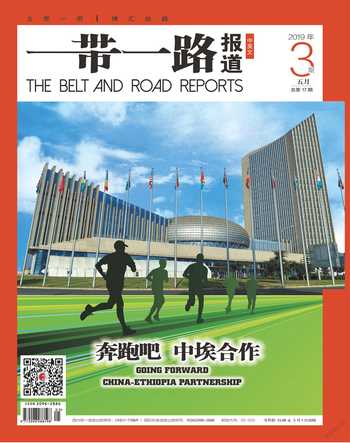Bolstering the Belt and Road Initiative through green finance
Yao Wang Christoph Nedopil Wang
This year, the Ministry of Ecology and Environment, togetherwith four other ministries, released the "Guidance onPromoting a Green Belt and Road". Realizing this ambition requiresgreen finance the full range of financial services that support thetransformation to an environmentally and climate-friendly economy.
Green finance in China has seen strong development basedon the "Guidelines for Establishing a Green Financial System"published by the People's Bank of China and six other governmentagencies in 2016. In 2018, the Chinese green bond market becamethe second largest in the world after the United States with theissuance of$30 billion.
Scaling and accelerating these experiences to greening the Beltand Road Initiative is a long-term but achievable goal. Failing togreen the Belt and Road would have potentially catastrophic climateimpacts.
Using green finance to green the Belt and Road is a uniqueopportunity to scale green technological development in the morethan 100 participating Belt and Road countries. Since it wasproposed in 2013, the initiative has seen investments in manysectors, particularly in energy (about 38 percent) and transport(about 27 percent), according to data from the American EnterpriseInstitute.
As the energy and transport sectors are the two biggest emittersof greenhouse gases worldwide, accounting for about 50 percentand 20 percent, respectively, of the total emissions in 2014, as perIntemational Energy Association data, reducing emissions from thesetwo sectors, while providing new economic growth opportunities,is one of the main challenges and opportunities for Belt and Roadgreen finance.
With significant investments in green energy technology energyproduction has seen a green revolution. According to a study byLazard, the annualized levelized cost of energy for solar photovoltaicand wind energy have dropped by 88 percent and 69 percent,respectively, from 2009 t0 2018, while the costs for coal and nuclearpower have increased by 9 percent and 23 percent, respectively.
Chinese investments have contributed to the technologicaladvances and price drops in green energy with companies such asGoldwind and United Power in wind turbines, Trina Solar and YingliSolar in solar energy,and BYD and Huawei in energy storage andmanagement. Investing in green energy technologies, and makingthem available to participating Belt and Road economies wouldgenerate green energy at affordable prices.
Similar to successful financing of green energy, investmentsin the transport sector are leading to a green mobility revolution:Electrification, automation, sharing mobility and digitalization arealready changing the way people and goods are transported

